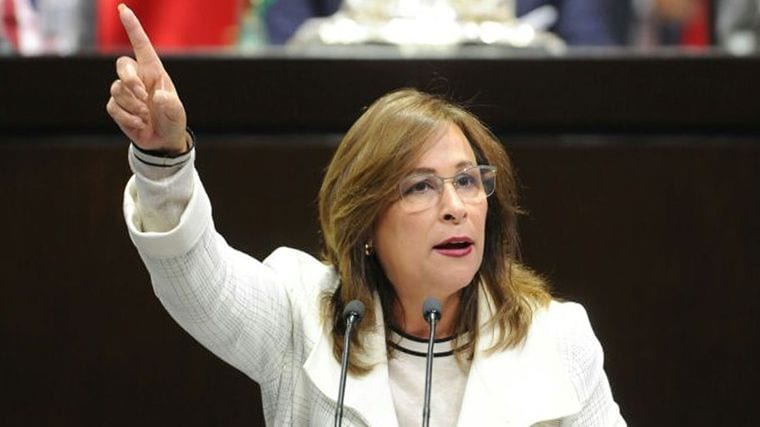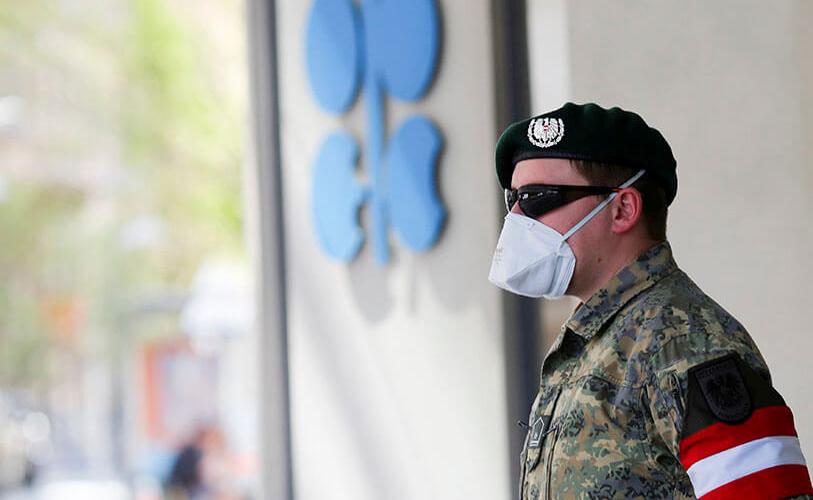On April 9, in the framework of the new OPEC+ deal, Mexico proposed to reduce oil production by 100 thousand barrels per day in the next two months, however, refusing to reduce production by 400 thousand barrels per day from the level of October 2018. What kind of “secret weapon” does the Mexican government have? What can Mexico’s refusal from the terms of the new agreement bring?
New deal between OPEC+ oil exporting countries (includes 10 countries: Azerbaijan, Bahrain, Brunei, Kazakhstan, Malaysia, Mexico, Oman, Russia, Sudan, South Sudan) “hung in the balance” because of the only country that did not agree Mexico’s proposed reduction in production. Negotiations with the Latin American country lasted almost a whole week, because the state has the advantage of allowing it to stand its ground against Saudi Arabia. Mexico has insured itself in advance from the collapse of markets on Wall Street, which allows it to dictate its terms in negotiations with countries, and in any case, the government understands that it can sell its oil at old prices.
During the negotiations that began on April 9, the OPEC+ countries confirmed their intention to reduce oil production in May-June by 10 million barrels per day, but only with the participation of Mexico. According to the action plan of the new deal, by the end of the year, OPEC+’s oil production decline will be 8 million barrels per day, and then until April 30, 2022 – 6 million barrels per day.

Saudi Arabia, which is the de facto leader of the organization, insists that the Latin American country reduce its production by 400,000 barrels per day, however, Mexico agrees only to 100,000 barrels. The Mexican President Andres Manuel López Obrador, who, having assumed office in 2018, began reforming the oil industry aimed at increasing production, does not support a deeper reduction.
Returning to the history of the issue, it is worth recalling that for 20 years Mexico annually buys put options for the sale of oil from a certain group of investment funds and oil companies. From the very beginning, the Latin American country declared these operations a state secret. In simple terms, options are the equivalent of an insurance policy. They give Mexico the right to sell its oil at a predetermined price at a specified time. Even if market prices collapse, in this case, the Mexican state receives the amount fixed in the contract.
By the way, in previous crisis years, hedging has already helped a lot. Turning to the official statistics of the Bloomberg news agency, in 2009, the Latin American country earned $ 5.1 billion in oil exports; in 2015 – $ 6.4 billion, and in 2016 – $ 2.7 billion. Mexico spends about $ 1 billion annually on the purchase of the above put options.
Nevertheless, the Mexican government has persistently defended its position in the negotiations, not only because of hedging. According to international analysts, the main reason prompting by the President Andres Manuel Lopez Obrador, a populist from the “left” forces, to oppose this deal is his promise to resume oil production through the state-owned company “Petroleos Mexicanos (Pemex)”.
The rescue plan for the oil industry, presented by Obrador in December 2018 after taking office, assumed that the production of the state oil corporation would increase from 1.73 million barrels to 2.48 million barrels per day by the end of November 2024. By the way, both the government itself and the company “Pemex” are also insured against a sharp drop in prices. According to Bloomberg in 2020, the Mexican corporation hedged the sale of 234,000 barrels of daily oil production at a price of $ 49 per barrel. Thus, the proposed decrease in production of 400,000 barrels under the new OPEC+ agreement will significantly reduce the profit of the Mexican company. According to some analysts, if the current low Mexican oil prices continue until the end of November, the Latin American country will earn about $ 6 billion on hedging.

Some progress was made during the April 11 talks between Mexico and Saudi Arabia. However, the fate of the oil deal remained illusory, as the kingdom insisted that the Latin American state agree to the quotas proposed to it. In turn, on April 15, the Mexican Secretary of Energy Rocío Nahle (Spanish – Rocío Nahle García) during a press conference said that Mexico would not reduce oil production from July to the end of 2020. The next was the second phase of this agreement, from July to December 2020, when countries said they would cut production not by 23%, but by 18%. According to Nahle, Mexico cannot do this and is restoring production by 100 thousand barrels per day in order to remain at the estimated level of 1.753 million barrels per day.

On April 10, the Mexican leader Andres Manuel Lopez Obrador in an official statement said that the Latin American country would cut oil production by 100 thousand barrels per day, and this decision was agreed with US President Donald Trump, who promised to take Mexican obligations “to himself”. The United States, in turn, pledged to reduce oil production by 250 thousand barrels per day.
A difficult historical deal in the oil market, as a result of which oil exporting countries nevertheless reduce production by 9.7 million barrels per day, and exporters from the G20 by 5.7 million, can stabilize the situation, although only for a while. According to experts, with an excess of supply on the market of 25 million barrels per day, such volumes will not be able to radically change the situation. Clear evidence is the fact that the markets did not respond to the deal by the growth of quotations. Today, experts consider the outbreak and consequences of the COVID-19 pandemic to be a major risk, due to which demand is sharply reduced. The extension of quarantine in some countries will unambiguously lead to an increase in reserves and will further reduce the demand for oil, which may possibly provoke a revision of the agreements reached in the near future.


